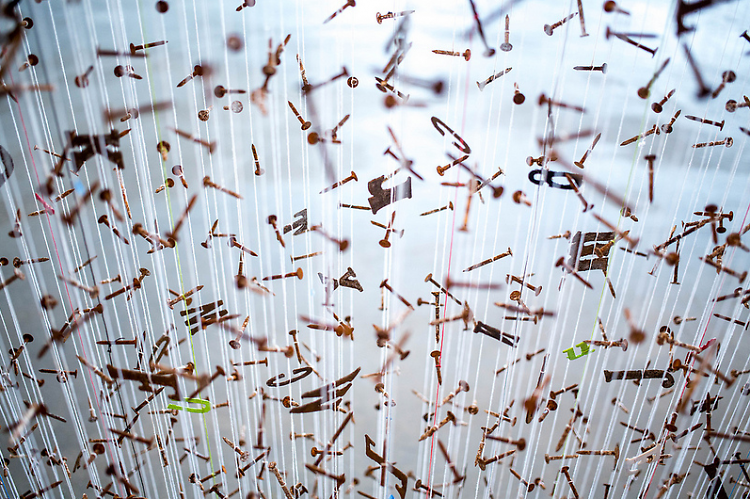DRIO series
This is the first of four steps that will be published in four installments this week.
For a single page version you can print out the full four steps here.

Description-step one of DRIO. How would you describe the artwork? /artwork by Gwendolyn Terry, photo by Yolanda Gonzalez
This is the first of four steps that will be published in four installments this week.
For a single page version you can print out the full four steps here.
Have you ever stood in front of an artwork and had no idea what to make of it? You aren’t alone.
There can be an bewildering amount of styles and approaches to art from realistic portraits to crazy room-sized motion sculpture. This is especially the case at ArtPrize.
There is, however, a pretty straightforward approach that works with all types of art. It's based on a process called "formal analysis" by E.B. Feldman, who was a Professor of Art at the University of Georgia. It's a four step process that can be remembered using the acronym DRIO.
DRIO is:
Description - What is there?
Relationships - How do the parts work together?
Interpretation - What is it trying to say?
Opinion - 1) Do you like it? 2) Is it successful?
The idea is to start with very specific observations in the beginning. After nailing down the specifics in steps 1 and 2 you form an opinion in steps 3 and 4.
Description step in a nutshell: This is the step where you simply name things. Just the facts, try not to come to any conclusions.
Who? How big? Where? Determine the artist, the size of the work, the title, when and where it was created, etc.
What do you see? Use words like grass, sky, barn, woman, trees and so on. If there is action in the work describe it without coming to conclusions (a person is behind a wall vs a frightened person is hiding). If the work is abstract you can use words like line, square, red and smooth. Avoid using words like weird or beautiful because right now we aren't making judgements about the work.
How was it made? Think about how the work was made. What materials and tools were used? What techniques were used to manipulate the materials?
Don't worry about getting every last detail- the major stuff is enough.
The Rapidian, a program of the 501(c)3 nonprofit Community Media Center, relies on the community’s support to help cover the cost of training reporters and publishing content.
We need your help.
If each of our readers and content creators who values this community platform help support its creation and maintenance, The Rapidian can continue to educate and facilitate a conversation around issues for years to come.
Please support The Rapidian and make a contribution today.